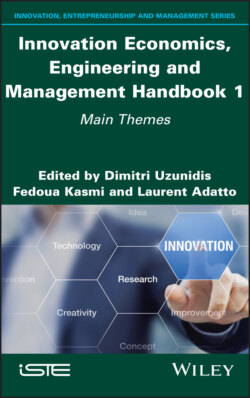Читать книгу Innovation Economics, Engineering and Management Handbook 1 - Группа авторов - Страница 19
2
Management – Managing Innovation According to Space, Time and Matter 2.1. Introduction
ОглавлениеManaging innovation can be summed up by two famous phrases. The first is attributed to the scientist Archimedes: “Eureka, I have found it”. It applies to the individual; it is a cognitive and emotional phenomenon that leads them to feel a certain wonder and the pleasant sensation of having found a solution to a problem (Lubart et al. 2015). In management, this discovery or “revelation” focuses on a management situation (Amabile 1988; Carrier and Gélinas 2011) such as, with reference to Olso’s Manual, the design of a new product or service, a new organization or commercialization or a new business model (Lubart et al. 2015). Coming from the mind of an individual, this creative idea arises a priori spontaneously from the reorganization of information, facts, knowledge and experiences that they have accumulated during formal or informal research, alone or with other individuals in the organization or not, such as consumers. Therefore, this idea does not come alone. It is nurtured by an enabling context and interpersonal relationships that enable such discovery.
However, this idea may prove to be a failure, hence the second phrase put forward by Winston Churchill: “Shoot for the moon, and if you miss you’ll land among the stars”. Even if the idea is original, new and promising, it is possible that it will never be applied in the organization, for economic, financial, technological or marketing reasons (St-Pierre et al. 2017). Furthermore, if it is implemented, studies indicate that the failure rate of innovations that are brought to market is around 85%. Indeed, innovation is only effective from the moment the novelty is introduced, as the etymology of the term indicates. Regardless of how enthusiastic they may be, the bearer of the idea will struggle to convince and interest enough people around them, hence the risk of a lack of ownership of the idea within the organization (Royer 2002). Kotter (2016, p. 12) explains, “The deeper you get into it, the more obvious it becomes that convincing others to ‘buy’ your ideas is both a human issue and a vital skill”. In fact, innovation implies an exploratory approach where the individual interacts both to enhance the value of his idea and to revise it according to the feedback from his interlocutors. Beyond technical knowledge or know-how, social skills – such as empathy, listening, persuasive communication and networking – are just as important.
If we agree that innovation is experimenting and testing, we must admit that trial, error and failure will be a part of the experiment as well. The Wright brothers spent three years trying different glider prototypes with multiple failures before they achieved their first successful motor-powered and controlled flight in an aircraft. The failures were a source of learning, allowing the two brothers to improve their idea into an innovation. In the corporate world, innovation also goes through many failures in the form of unfinished, unvalidated, or overly expensive ideas, etc. Even if it does not lead to innovations, this knowledge is very useful and feeds the organization’s creative slack, i.e. a pool of ideas that the organization can draw from to innovate again (Cohendet and Simon 2015; Gay and Szostak 2019). This consolidates its capacity to innovate, or propensity to realize, innovations (Hadjimanolis 2000; Wang and Ahmed 2004; Kmieciak et al. 2012). It took Nestlé more than 15 years to find the right commercial and strategic formula to sell espresso to a mass market. Several times, the project was almost abandoned after several failures in the market.
The brief discussion of these famous formulas applied to the world of organizations leads us to underline how difficult it is to manage innovation: it involves individuals, the organization, their capacities and resources; it requires a variably long time frame due, among other things, to potential failures; it meshes the internal space of the organization, and also the external space. However, innovation is essential to exist in a competitive market, to differentiate oneself from one’s competitors, or to create a new activity, or even a new market, in a disruptive manner (Porter 1996; Kim and Mauborgne 2005; Christensen et al. 2015). The question that many managers then ask themselves is: how to manage innovation? In other words, how do we find the ideas that give rise to innovations, select them and share them within the organization and with other stakeholders?
The purpose of this chapter is to propose the elements of response according to three complementary dimensions, summarized in a symbolic way under the three notions: “space, time and matter”.
– The first is particularly concerned with space, as seen from the perspective of organizational boundaries. The objective is to understand their roles in innovation, the actors involved, and the challenges posed for organizations in terms of innovation management.
– The second dimension focuses on presenting the emblematic processes of innovation, in particular the stage gate from the idea to the implementation of the innovation.
– The third dimension refers to the material, sensitive version of innovation, i.e. the product, the service, a new organization, etc., and returns to its appropriation by individuals and the challenges faced by managers.
